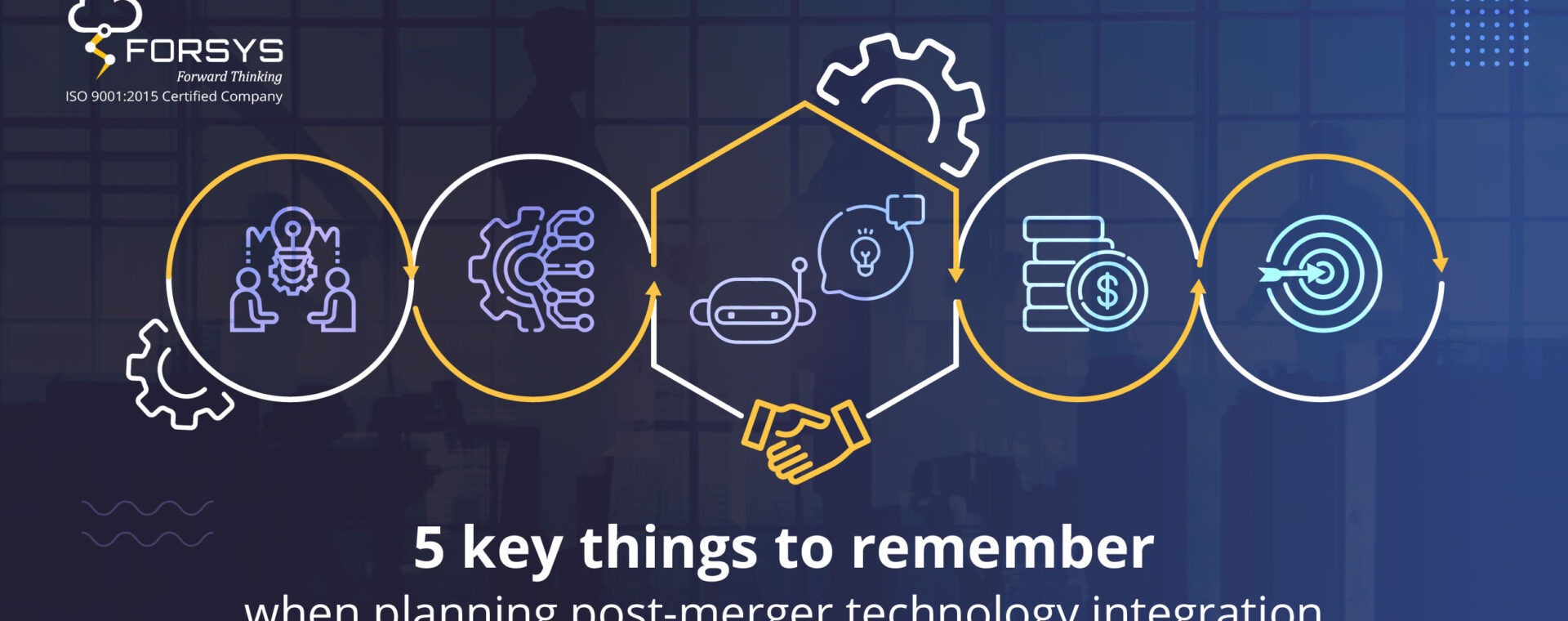Introduction
There are innumerable reasons why businesses engage in mergers and acquisitions (M&As), the most important of which is to scale up business either through business diversification, enhancing product and service efficiencies, or growth opportunities in the unexplored markets.
Despite tens and thousands of M&A deals fructifying every year, only a handful of them has been able to drive, unlock and bring value. The reason? The absence of a realistic and well-planned post-merger integration plan. A report suggests that a mere 47% of M&A deals produce positive gains within the first year and less than 40% have a standardized post-merger integration (PMI) plan in place. Industry insiders believe that M&As that fail to emphasise technology integration early in the deal cycle are more likely to underperform.
There is no denying that M&A is a tough nut to crack, but post-merger tech integration is even harder. While capturing the value of the deal is a balancing act that requires close attention to the varied attributes such as employees, customers, stakeholders, and management, technology integration is an area that is often overlooked. Not setting aspirational, yet achievable, targets and evaluating optional pathways to reach those goals is a large contributor to the problems.
Having said that, post-merger technology integration is one of the most challenging aspects and an unavoidable prerequisite. Since every business has its data, processes, infrastructure, achieving successful tech stack integration depends on careful planning, maintaining focus on the goals, evaluating optional pathways, and identifying and encapsulating synergies.
Wondering how IT leaders can navigate architecture shifts and oversee technology integration after an M&A deal is completed? We’ve got you covered. From our experience managing post-merger IT integrations for global businesses for over a decade now, here are some crucial pointers to remember that will help you plan, navigate and remove the barriers as swiftly as possible.
- Collect key post-merger integration data in advance
Businesses must gather as much information as possible that will support the post-merger integration strategy. If you don’t start your groundwork before the merger, devising a clear strategy beforehand and engaging teams will be a nightmare. A facts-driven strategy can reduce the risks, achieve higher success rates, deliver on expectations, and enable improved synergies across the merged entity.
- Review the current state of IT before initiating the integration
Usually, integrating multiple disparate systems, applications, and processes makes technology integration complicated. Spend time auditing the acquired/merged organization’s IT processes, operations, strategy to understand if they will merge well with the new environment, architecture, and infrastructure.
Keeping the present infrastructure on both sides in mind, define the targets to reduce the risk of failure.
- Decide on the approach and consider Optional Pathways
Instead of using ‘this is how we prefer to operate, do a thorough evaluation of the upscaled tech stack. For example, if the acquired company’s IT infrastructure is its strong point, then it is advised to use their setup. Leveraging the ‘lean greenfield’ approach can do wonders as the tech stack is prepared in advance. This enables the acquirer to quickly adapt the technology stack instead of opting for the reconfiguration route. In case deciding on the ‘right’ approach is too much to handle, collaborate with a third-party consultant to undergo an objective assessment.
Post-merger tech stack integration is an excellent opportunity to bring and implement status quo changes, improve processes and technology for the merged entity as a whole. McKinsey states that many mergers fail to meet the expectations due to the lack of a well-thought-out IT integration strategy. Having a post-merger IT integration roadmap and change management plan boosts the future synergies and leads to cost savings.
- Mapping the application dependencies
When the end goal is to bring together varied systems, it is key to map the applications correctly, identify their interdependencies and even tier them based on their relevance to the merged entity.
- Have a disaster recovery plan in place
Include a disaster recovery plan to support mapping dependencies and offer a failsafe in case things don’t go as planned. Also, ensure to test your disaster recovery plan and make necessary updates when systems, technologies, processes, dependencies change.
The parting words
Since managing a successful post-merger tech integration is a complex and challenging endeavor, always remember the golden rule is to start early and stay focused on the objectives. Also, consider engaging an expert like Forsys that offers battle-tested post-merger integration services using the M&A Integration Playbook and build–operate–transfer (BOT) approach backed by efficient mapping and assessment to create a long-term integration and rationalization plan for the clients.
Want to plan your post-merger technology integration journey with us? Talk to us.

